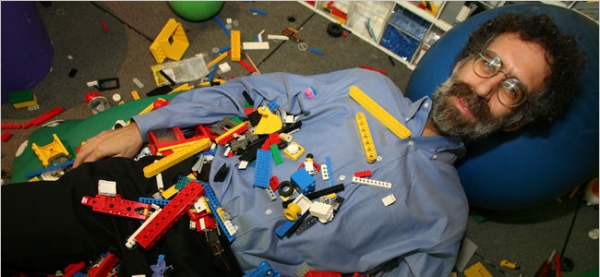Mitchel – it’s the start of a new academic year, and the excitement around implementing technology in the classroom continues to grow. In your opinion, what’s the biggest technology to change learning in the last year?
I’m excited about new “coding tools” that make it easier for kids to program their own interactive stories, games, and animations.
What is essential when designing creative projects for high-tech kids?
We should develop technologies and activities that engage kids in designing, creating, experimenting, and expressing themselves.
How important is the link between computers and learning outcomes?
What’s most important is deciding on the learning goals. For me, the top goal is helping kids develop as creative thinkers and learners.
Is technology the key to engaging the unengaged?
What’s most important is providing kids with opportunities to work on projects that they really care about.
How have new technologies revolutionised the classroom dynamic?
Unfortunately, many new technologies are simply reinforcing old educational approaches, not revolutionising the classroom.
Technology for creativity – where do we go from here?
“Create” is at the root of creativity. We need more technologies that engage kids in creating.
Will computers lead to the potential demise of the physical teachers?
No, human relationships and interactions are at the core of good learning experiences.
What inspired you to start the creative after-school centres for low-income communities?
We saw that many young people didn’t have places where they could learn to express themselves creatively with new technologies.
What achievement in your life has made the biggest impact on society?
The development of new tools (like LEGO Mindstorms and Scratch) that help young people learn to think creatively and work collaboratively.
You’ve achieved many things in your career, but what else would you like to accomplish?
I’d like to help establish coding as a new literacy. Just as everyone should learn to write, I think everyone should learn to code.
What can LEGO offer STEM subjects?
STEM subjects should take a more project-oriented approach, and LEGO materials are great for working on projects.
How good are STEM subjects for connecting pupils across different countries?
It all depends on how the activities are organised.
What’s on the technological horizon for the coming months that we can expect to hear more of?
I expect many new “maker technologies” that expand the ways people can create and make things.
What’s your number one tip for teachers who are writing creative lesson plans?
Give Ps a chance – provide students with opportunities to work on Projects, with Peers, in a Playful spirit, drawing on their Passions.
Why do you see coding as an important skill for everyone, not just computer whizzes?
In learning to code, kids learn to solve problems, design projects, and communicate ideas – essential skills in today’s society.
Do you agree with Mitchel? Let us know in the comments.
[Photo by Robert Spencer for The New York Times]


















